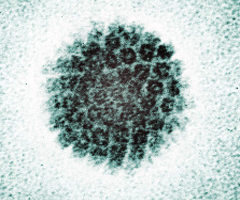HPV causes genital warts and cervical Cancer!
In 2008, Harald Zur Hausen won the Nobel Prize in Physiology or Medicine for his discovery that practically all cases of cervical cancer are due to a long-term infection with any of several strains of human papillomavirus (HPV). He also won the 2013 Society for General Microbiology Prize Medal. Here’s an interview with Dr. Zur Hausen:
Here is a video that gives an overview of the HPVs:
We now have effective vaccines against the strains of HPV that are responsible for most cases of cervical cancer. One of these vaccines also prevents the strains that are responsible for benign genital warts. These vaccines are remarkably safe. They are most effective when they are given to patients who have not yet been exposed to those strains of HPV. That’s why the HPV vaccines should be given to preteen girls and boys—before they are old enough to have sexual activity.
Why the vaccine trials did not count actual cancers
Many people have complained that the clinical trials of the HPV vaccine have used the number of precancerous lesions, as opposed to actual cancers, as an endpoint. However, there was a practical reason for this: You would expect ZERO cancers in either group: the vaccinated and the unvaccinated. The women in the clinical trials were being so closely monitored that any cervical lesion would be found and removed before it became malignant.
The HPV infection can cause a wart-like lesion on the outer surface of the cervix, which is the neck of the womb. These lesions consist of abnormal, HPV-infected cells. The dangerous strains of HPV block some of the processes that would normally cause an abnormal cell to commit suicide. Because these processes are blocked, the HPV virus can enable its host cells to survive, even though they are defective. Unfortunately, this means that the host cells can survive long enough to collect enough mutations to become malignant. It takes about 10 years for the lesion to become malignant.
Why the HPV vaccine is important
If you could find and remove all of these precancerous lesions before they become malignant, you could prevent all cervical cancers. That is why the regulatory authorities let the vaccine sponsor use the number of precancerous lesions as the endpoint in the study. Unfortunately, not all women get regular pelvic exams, and some lesions can be missed during an exam. Also, HPV can cause lesions that are harder to diagnose at a curable stage. That’s why vaccination is important.
Since the vaccine is so effective, it can actually stop the targeted strains of HPV from circulating among the next generation. Ultimately, we will judge the value of the HPV vaccine by seeing how sharply the number of cervical cancers and other cancers drops in the countries that vaccinated their young people against HPV.
Photo by AJC1 


